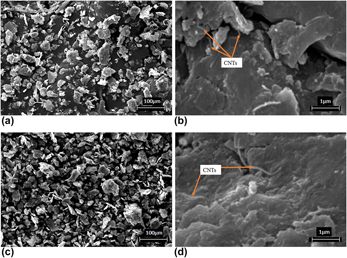Crossref Citations
This article has been cited by the following publications. This list is generated based on data provided by
Crossref.
Hajiaboutalebi, Mohammad
Rajabi, Masoud
and
Khanali, Omid
2017.
Physical and mechanical properties of SiC-CNTs nano-composites produced by a rapid microwave process.
Journal of Materials Science: Materials in Electronics,
Vol. 28,
Issue. 12,
p.
8986.
Rahimi Pouyani, Millad
and
Rajabi, Masoud
2019.
Microwave-assisted synthesis of Cu–ZrB2 MM Nano-composite using double pressing double sintering method.
Journal of Materials Science: Materials in Electronics,
Vol. 30,
Issue. 1,
p.
266.
Alem, S.A.A.
Latifi, R.
Angizi, S.
Mohamadbeigi, N.
Rajabi, M.
Ghasali, E.
and
Orooji, Yasin
2020.
Development of Metal Matrix Composites and Nanocomposites Via Double-Pressing Double-Sintering (DPDS) Method.
Materials Today Communications,
Vol. 25,
Issue. ,
p.
101245.
Najafi, Alireza
Rajabi, Masoud
Baghshahi, Saeid
Mohammadi, Vahid
and
Esfahani, Fatemeh Parsi
2021.
Physical properties and microstructural characterization of copper–ZrO2/YSZ nano-composites produced via double-pressing double-sintering method (DPDS).
Journal of Materials Science: Materials in Electronics,
Vol. 32,
Issue. 24,
p.
28307.
Yarahmadi, Akbar
Mohammadian Semnani, Hamidreza
and
Abdoos, Hassan
2022.
Simultaneous Effects of Carbon Nanotube Content and Diameter Size on Microstructure and Mechanical Properties of Double Pressed Double Sintered Al/Carbon Nanotube Nanocomposites.
Journal of Materials Engineering and Performance,
Vol. 31,
Issue. 9,
p.
7423.
Yarahmadi, Akbar
Mohammadian Semnani, Hamidreza
and
Abdoos, Hassan
2024.
Effect of Re-sintering Temperature and Carbon Nanotube Content on Mechanical Behavior Al-CNTs Nanocomposites.
Journal of Materials Engineering and Performance,
Yarahmadi, Akbar
Mohammadian Semnani, Hamidreza
and
Abdoos, Hassan
2025.
The response of double press double sintered (DPDS) Al/CNT nanocomposites against wear, impact, and bending.
Tribology - Materials, Surfaces & Interfaces,
Vol. 19,
Issue. 1,
p.
70.
